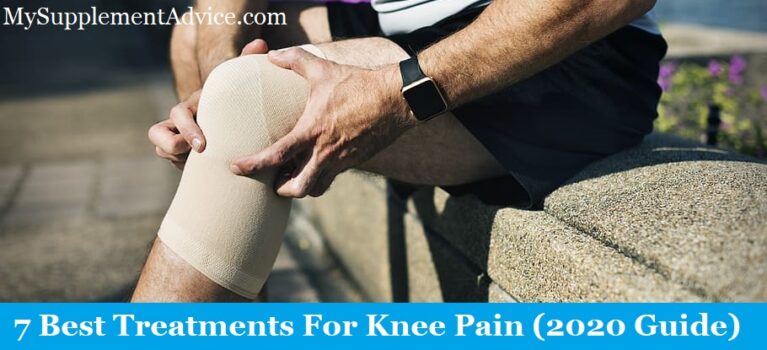
Are you dealing with knee pain and nothing seems to help?
Well – I bet you never tried these alternatives.
Here are the best treatments for knee pain:
- work even on the long term
- high per cent of satisfied users
- very few side effects
Besides – all of these alternative treatments can be combined with your prescription drugs.
So did this convince you they're worth giving a shot?
Let's take a closer look at each.
Note: These treatments should be used together for best results.
#1 – Glucosamine & Chondroitin
1. How It Helps: If your knee pain is caused by osteoarthritis:
- repairs damaged cartilages
- decreases pain
- reduces inflammation and swelling
2. Best Way To Use It: Supplements
3. My #1 Recommended Product: Nuzena's Joint Support +
In most situations, knee pain is caused by osteoarthritis.
If that's your case as well – glucosamine and chondroitin are the easiest solution.
1. How It Helps
These are the key ingredients when it comes to repairing damaged cartilages.
In osteoarthritis, the pain is caused by cartilage tear:
- cartilages are meant to cushion and protect the joints
- however, they can wear off due to accidents or aging
- in this case, joint and bone friction appears
That's what makes glucosamine & chondroitin so effective.
They're the only natural ingredients that can re-build cartilages (sometimes even from scratch):
- Glucosamine has the best effect.
- Its strength increases when combined to chondroitin.
- It also has anti-inflammatory proprieties. [1]
Obviously – the milder your cartilage damage is, the better would these ingredients work.
Besides, their main advantage is that they treat the cause of the problem.
They don't only mask the pain for a short while (as most treatments do).
For this reason – they're my #1 recommended treatment for knee pain caused by osteoarthritis.
2. How To Use It
The best way to take the recommended dosage of these compounds is through supplements:
- better absorption
- higher dosages
- lower price
And obviously – supplements have a much stronger effect (compared to powder).
You can find glucosamine and chondroitin powder as well.
But in most cases, it's not combined (only contains one of them).
So you would have to mix them up yourself – which is quite tricky (you need a higher quantity of glucosamine).
That's why I strongly recommend supplements.
3. My #1 Recommended Product
There's one glucosamine/chondroitin supplement I strongly recommend.
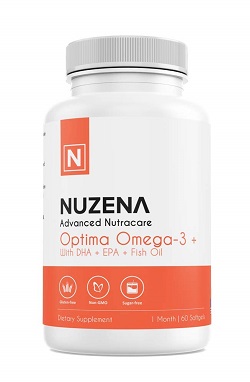
- Excellent dosages of both ingredients.
- Much cheaper than its competitors.
- You can pay in monthly installments.
- Shipping is free in most cases.
- Available in any country in the world.
Honestly – I don't know any other supplement of this value that costs as little as $15/bottle.
That's why it's my top recommendation for knee pain caused by osteoarthritis.
#2 – Healthy Spices
1. How It Helps: Reduces inflammation levels.
In this way – knee swelling and pain stay to a minimum.
2. Best Way To Use It: Powder or pills
3. My #1 Recommended Product: Turmeric & Ginger from Vita Balance
Certain spices have some major anti-inflammatory proprieties.
Since painful knees are often affected by inflammation – spices can be a miracle-maker.
1. How It Helps
First of all – knee pain is always caused by inflammation:
- it can be the main cause (in RA)
- or the secondary one (in OA)
Either way, inflammation is always there.
In fact, if your achy knees weren't swollen inside – they wouldn't hurt so much.
That's why reducing inflammation is so helpful.
And certain spices can really do that:
- Turmeric – best natural anti-inflammatory [2]
- Ginger – can reduce swelling molecules
- Capsicum – heats up the area and reduces inflammation
Now – out of these spices, turmeric is by far the best one.
There's no surprise it's recommended by most doctors against arthritis.
Its strong anti-inflammatory effect makes it the best herb against inflammation.
So it's an essential weapon when fighting with knee pain.
2. How To Use It
If you want to combine all the 3 spices I mentioned above – powders are the easiest way.
You can find each as powder, which you can then use while cooking.
However – there's another way to use these spices.
I'm talking about supplements:
- much higher dosages
- increased absorption (compared to powder version)
- easier to take
It's true that finding a supplement to contain all 3 spices is harder.
But I would recommend choosing one that has turmeric (since it's the strongest).
A turmeric supplement alone has a stronger effect than all 3 spices as powders.
3. My #1 Recommended Product
There's a supplement that contains 2 of the 3 essential spices above:
turmeric
- ginger
It's called Turmeric & Ginger by Vita Balance:
- Combines high quantities of turmeric with ginger.
- Stronger effect against inflammation.
- Also contains BioPerine (which increases absorption massively).
This is one of the few supplements that combines these 2 top spices.
Besides – it's significantly cheaper than most of its competitors.
That's why it's one of my top recommendations for knee pain.
In case you can't take it as pills – you can use the powder inside when cooking.
#3 – Essential Oils Massage
1. How It Helps: Provides fast pain relief.
However, it doesn't improve the problem inside the knees in any form.
2. Best Way To Use It: Topically
3. My #1 Recommendation: CBD Oil
Aromatherapy is a great way to get relief instantly. [3]
That's why essential oils are a lot more helpful than you think.
1. How It Helps
Essential oils aren't a real knee pain treatment:
- mostly have a local effect
- relief appears fast and doesn't last long
- not effective on treating the cause
However – they have an excellent effect when combined with supplements.
Oils reduce the pain instantly and supplements have enough time to work.
Besides – lots of people swear by essential oils.
It seems like they can reduce the pain within seconds.
So despite not being a proper knee pain treatment – they're great as a short-term remedy.
2. How To Use It
Aromatherapy works best when applied locally:
- Add a few drops of essential oil in your palm.
- Apply it on the painful knee.
- Massage for a few minutes.
- Wait until the oil soaks in completely.
- You should notice your pain gets better in a few minutes.
Now – what kind of essential oil should you use?
Honestly, pretty much all of them should work.
As long as they have a strong fragrance and a greasy consistency, they will do their job.
3. My #1 Recommended Product
To be honest – there isn't a certain essential oil brand I recommend.
In terms of herbs, my top suggestion would probably be CBD oil.
Though it's not an actual essential oil – it has pretty much the same features.
And when it comes to relieving pain, it's the best:
- strongest anti-inflammatory proprieties among essential oils
- soaks in very fast
- relieves pain quickly
- effect lasts longer than in other oils
Still – CBD oil isn't sold in every state/country in the world.
So if it's not available in your country, go for peppermint oil instead.
In terms of intensity – it's the next one after CBD, in my opinion
#4 – Heat & Cold Therapy
1. How It Helps: Both therapies can reduce the pain:
- ice decreases inflammation
- heat improves flexibility
2. Best Way To Use It: Ice packs/Heating pad
3. My #1 Recommended Product: Any heating pad (even the cheapest one)
That's another short-term remedy that can help considerably.
The only trick is to know when you should apply heat and when you should apply ice.
1. How It Helps
Here's the rule when it comes to heat/ice therapy:
- Both can reduce the pain, depending on the case.
- Ice decreases inflammation.
- Heat helps with stiffness.
In other words – if your knee is very swollen, use ice.
This will reduce the inflammation and consequently, the pain.
On the other hand, if you have trouble bending down or your knee feels very stiff – use heat.
This will increase joint lubrication and decrease the stiffness.
But what if your knees are both swollen and stiff?
- use both heat and ice
- start by applying some ice on the painful spot
- don't apply it directly on the skin
- instead – use a towel or a cloth
- a few minutes afterwards, apply heat
- this will reduce stiffness within minutes
2. How To Use It
Ice is pretty easy to get – and so is applying it.
Just place the ice in a cloth and then apply it on your achy knee.
But what about heat? How should you use it?:
- heating pad (most popular option)
- hot bottle
- warm rice bag
If you afford buying a heating pad, I totally recommend it because it's easier to use.
But if you don't – heating up a bottle or a rice bag works in the same way.
Just place it on your painful spot and let it sit for a few minutes.
3. My #1 Recommended Product
As I said, I advise you to get a heating pad (if you can afford it):
- really easy to use
- heats up when plugged in
Compared to rice bags and bottles – it warms up a lot more simple.
When you have knee pain, comfort is always the best solution.
As for ice, there isn't anything I can recommend you.
#5 – Apple Cider Vinegar
1. How It Helps: Reduces knee inflammation and swelling.
2. Best Way To Use It: Either as a drink (most popular) or as a supplement.
3. My #1 Recommended Product: Any organic brand
This home remedy can be really helpful in arthritis.
So if this condition lies behind your knee pain, ACV can be very useful.
1. How It Helps
Apple Cider Vinegar has some real anti-inflammatory proprieties.
That even though it's not scientifically tested:
- Reduces arthritis pain (according to previous users).
- Improves flexibility.
- Decreases long-term stiffness.
Obviously – it's not effective in all cases.
And since it's not backed up by science, that's not surprising.
However – some arthritis sufferers swear by it.
So if your knee pain is caused by arthritis, ACV is really worth trying.
2. How To Use It
Well – most people prefer using the drink:
- available from lots of different brands
- easy to find in any local stores
- very low price
Besides – the drink has a pretty good taste (for most people).
And you don't even have to drink it as such.
Diluting a tablespoon of ACV in a glass of water is enough.
So its taste should become even more insignificant (for those who dislike apple taste).
Other than that, there are also ACV supplements:
- stronger effect due to higher dosages
- helpful for many health problems
- pretty low price as well
So if you dislike the drink's taste – taking ACV as pills is a good solution.
3. My #1 Recommended Product
In terms of drinks – any organic brand would do.
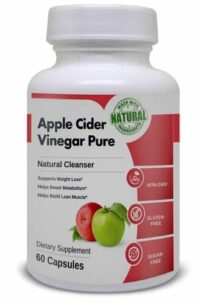
So as long as their ingredients are organic, the dosages are exactly the same.
As for the supplement – I would stick to a product from Vita Balance:
- lower price than its competitors
- same ingredients and dosages
- helpful for a bunch of conditions
Obviously – any other brand would be fine.
But if you want to get the lowest price, I strongly recommend this one.
#6 – Experiment With Foods
1. How It Helps: Giving up certain foods can decrease knee inflammation.
2. Best Way To Use It: Testing out different foods to see how your body reacts to the change.
3. My #1 Recommended Product: None
According to scientists – certain foods can worsen inflammation.
And that's also available to joint pain.
1. How It Helps
Basically – here's what experimenting with foods means:
- try giving up certain foods for 1-2 weeks
- see whether your knee pain gets better or not
- bring those foods back into your diet
- see if your pain level stays the same or not
- repeat this step with other foods
Now, what kind of foods should you try giving up for a while?
Some research claim that eggplants, tomatoes and even potatoes can increase inflammatory levels.
So giving them up for a while can help you see whether that's true or not (in your case).
However – I personally don't consider that that dangerous.
But still, if science claims so – you might want to test that out.
2. How To Use It
As I said, it's pretty simple:
- Start by giving up eggplants for 1-2 weeks.
- Notice if your pain gets better or not in the meantime.
- Afterwards, bring eggplants back into your diet.
- Pay attention how your pain levels get now.
- Up next, try giving up tomatoes and so on.
Now – there are many other foods you can experiment with:
- dairy (which are claimed to increase inflammation)
- red meat
- eggs
It's all about finding those foods that your body works better without.
Once you do this – your knee pain should get better on the long term.
3. My #1 Recommended Product
There's nothing I could recommend you here.
Just try to stop eating different foods for a while (each at a time).
There's no foods I recommend you to eat instead or anything of this kind.
#7 – Menthol Creams
1. How It Helps: Numbs the painful area and decreases the pain (for a short while).
2. Best Way To Use It: On the painful spot
3. My #1 Recommended Product: Mentholatum Cream
Just like essential oils – creams based on menthol are a great short-term remedy.
That's because they provide pain relief very rapidly.
1. How It Helps
Menthol has some amazing analgesic proprieties:
- Provides an instant cooling sensation.
- Numbs the painful area.
- Soothes the pain within minutes.
But just like essential oils – the relief only lasts for a few hours (at most).
That's why menthol creams (and any other topical products) aren't my #1 recommendation for knee pain.
However – when combined with internal products, they can work a lot better.
That's why they make a potent knee pain treatment in some cases.
2. How To Use It
Most menthol creams have clear directions.
So using them is quite simple:
- Apply the recommended quantity on your painful knee.
- Massage and let it sit.
- Wait until the cream soaks in completely.
Most products recommend applying the cream for a maximum number of times.
So it's important to stay under that number.
But in most cases – you will have to apply it 4/5 times per day (depending on the intensity of your pain).
3. My #1 Recommended Product
Menthol creams are pretty similar in terms of ingredients.
That's why it's pretty hard for me to pick a certain one.
However – my #1 choice would probably be a cream called Mentholatum:
- combines menthol with camphor (another potent analgesic)
- really low price
- very easy to find
Still – you can pick any other menthol cream, as long as it has over 2% menthol.
That's the minimum dosage I recommend.
3 Extra Tips
In case these 7 treatments weren't enough, here are 3 more small tips to help.
1. Taking Walks
That's pretty much the same as exercising.
But in most cases, your painful knee doesn't allow you to move and stretch as you used to.
For this reason – taking walks is a better alternative:
- doesn't require much energy
- helpful for general health
- easiest way to exercise
Your knee pain may be preventing you from walking normally.
But even so – try to take even small walks everyday.
2. Keeping A Regular Weight
Knee pain is very common in overweight people.
Even if your joints are otherwise health – it's the weight pressure weakening them.
So that's where the pain comes from.
If that's your case as well, maintaining a healthy weight can bring your knees back to healthy times.
3. Staying Hydrated
Another essential tip for knee pain is to drink enough water:
- dehydration can also affect the joints
- it decreases lubrication and causes stiffness
For this reason – keeping your joints hydrated is essential.
But there's nothing special you have to do.
Just make sure you drink enough water daily and your knees should stay in a good shape in terms of hydration.
My Verdict – What's The Best Treatment For Knee Pain?
Short answer: I mostly recommend glucosamine + chondroitin supplements.

- Treat the problem inside.
- Relieve than pain and repair damaged cartilages.
- Effect lasts on the long term.
- Really low price.
However – I mostly recommend these supplements if your pain is caused by cartilage damage.
Besides, I suggest combining them with the other treatments from this list:
- Spices (Turmeric & Ginger)
- Massage with essential oils
- Heat & cold therapy
- Apple Cider Vinegar
- Trying different foods
- Menthol creams
And obviously – make sure to keep a regular weight and exercise as much as you can.
Just keep in mind that these 7 treatments are complementary.
This means they work better when combined together.
That's why I advise you to follow all of them, at least if you want to get the best results.
References:
1 – https://www.ncbi.nlm.nih.gov/-pmc/articles/PMC3150191/

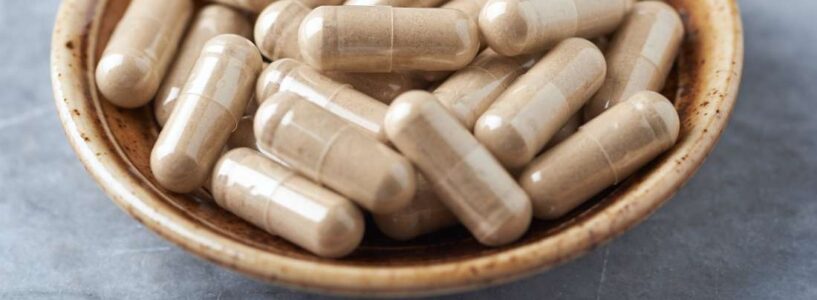
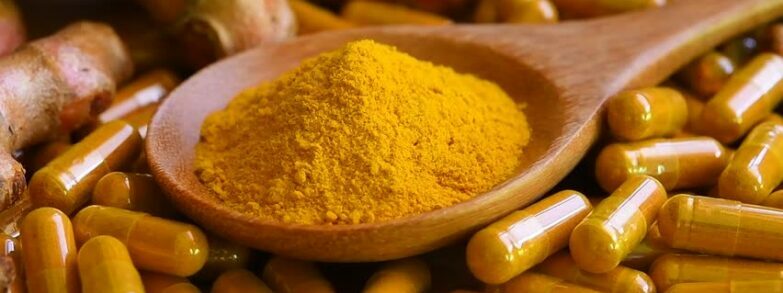
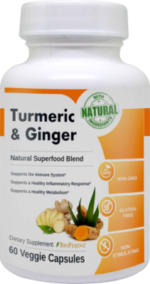 turmeric
turmeric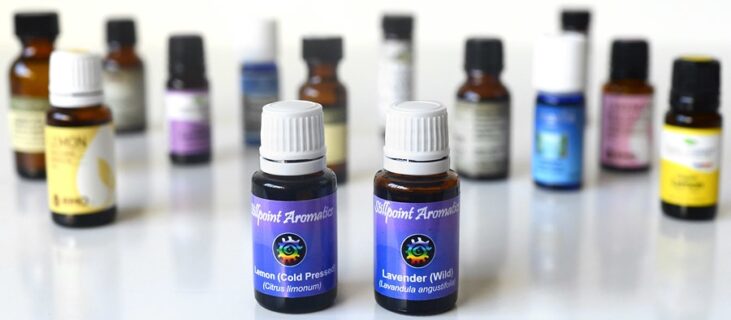





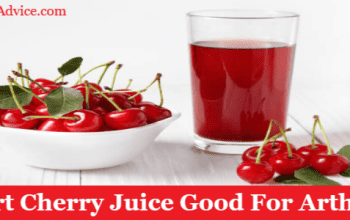
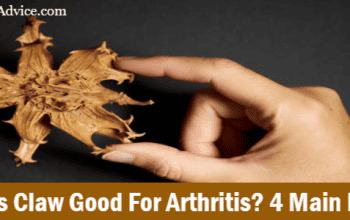
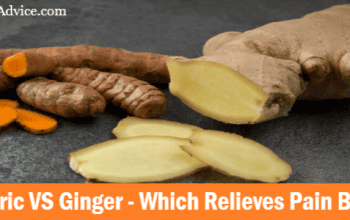
I think this article is god-send as I am looking for information on how to treat this pain in my knee that refuses to go away. Three years ago, I got into an accident here inside our home where I fell to the floor from a height and the first thing that struck the floor was my left knee. It’s been three years already and the wound has superficially healed but I feel there’s still an injury near the bones in my knee even though superficially the knee looks okay. Folks said I should go for an x-ray to see if there’s still an injury in my knee.
Can turmeric help in healing the suspected internal injury in my knee?
Hello Gomer, sorry to hear about your accident. First of all, I recommend you to see a doctor and have several tests he suggests (an X-ray will most likely be among them). 3 years is a lot, so if it still hurts, there might be some damage inside.
Now – in most cases, accidents can affect the cartilage and that’s what causes the pain. In this situation, glucosamine + chondroitin supplements are the best thing you can try, because they repair damaged cartilages and restore flexibility.
As for turmeric, it works best against inflammation. And considering your symptoms, I doubt your pain is caused by inflammation. To be more exact, if your knee was inflamed inside, it should be swollen on the outside, warm and even red. But that doesn’t seem to be the case.
So I pretty much believe the accident destroyed some of the cartilage inside your knee and that’s where the pain comes from. That’s why I strongly recommend seeing a doctor. Until then, you can try these home remedies for osteoarthritis (that’s how cartilage damage is called). Obviously, you can also try taking turmeric – but I doubt it’s going to help much (at least not alone).
Please make sure to see a specialist as soon as possible and let me know what he says. I hope this helps you.
Thanks immensely for this. Having read your post I will most definitely be trying Nuzena’s Joint Support. I’ve tried a lot of these things. Actually my regular diet already includes a lot of ginger and tumeric and I tried apple cider vinegar but I guess I am one of those who didn’t like the taste. So I will try the apple cider vinegar supplement you suggested rather than the drink. I agree with you totally on taking regular walks – so much more important to make the effort now that my daily walks to and from work which accounted for nearly 1 hour a day are no longer needed – like so many people I am working from home and despite what some public officials are saying it does look as if this situation is going to last for months not weeks.
This is really helpful. I thought I had commented on one of your earlier posts but I can’t find it now -anyway I asked what I should do as I have OA in one knee and the other is already totally replaced. So you have answered my question completely. Thanks for this again and all success to you.
Hi Andy, thanks for your feedback. I don’t remember seeing your previous comment, so it was probably not added right and thus it didn’t get saved. But this guide on the best OA remedies should help you.
Normally, for osteoarthritis I recommend going for glucosamine + chondroitin supplements, because these are the only substances that can re-build damaged cartilages. However, their effect depends on the percent of cartilage you have left in your joint. The more, the better. Still, I know many people who had no cartilage left and glucosamine products helped them avoid surgery.
So it’s definitely possible, but it pretty much depends from person to person. But you’re not losing anything trying this, so I totally recommend it.
As for these knee pain treatments, consuming ginger and turmeric isn’t very helpful in severe forms of OA. At least not alone. That’s why I recommend following the other steps as well, because the effect will add up. As for apple cider vinegar, some people swear by it while others say it’s not helpful at all. But if the taste bothers you, the supplement can be an easier alternatives. You can combine it with Nuzena’s glucosamine product, so it’s totally fine from this point of view.
Also, continue to move around every day, even when it feels hard. Moving around is a lot easier than exercising or practicing a sport (which many experts recommend). So I feel like it’s the best way to move around with arthritis or knee pain.
I really hope this is going to help you and please let me know how it goes.
First of all – knee pain is always caused by inflammation
No,
I disagree
I have no medial cartilage. That causes the pain!
but
I have found that Turmeric and ACV does good things
oh
An offloading heavy knee brace is my best treatment
Hi Richard, unfortunately, you’re not completely right.
Knee pain isn’t always caused by inflammation. It is indeed caused by it in most cases, but a few people struggle with terrible knee pain because of their lack of cartilage in their knees. It’s also true that this lack of cartilage produces inflammation in the area, which end up causing pain. So even though your point is good, it’s not completely medically accurate.
Regarding turmeric, I agree that it’s great for knee pain because it’s the best natural anti-inflammatory. It’s all about choosing the right product, because most of them are either under-dosed or they lack absorption booster (turmeric is mostly eliminated without them). As for ACV, it’s considered a home remedy for a lot of health issues, even though it doesn’t have any research behind (as turmeric does). But I don’t consider it really effective for joint pain, I received a lot of feedback from my readers and it wasn’t the best one. Still, people are different, so if you feel like ACV is helping you, you should definitely keep using it.
Hope this helps!